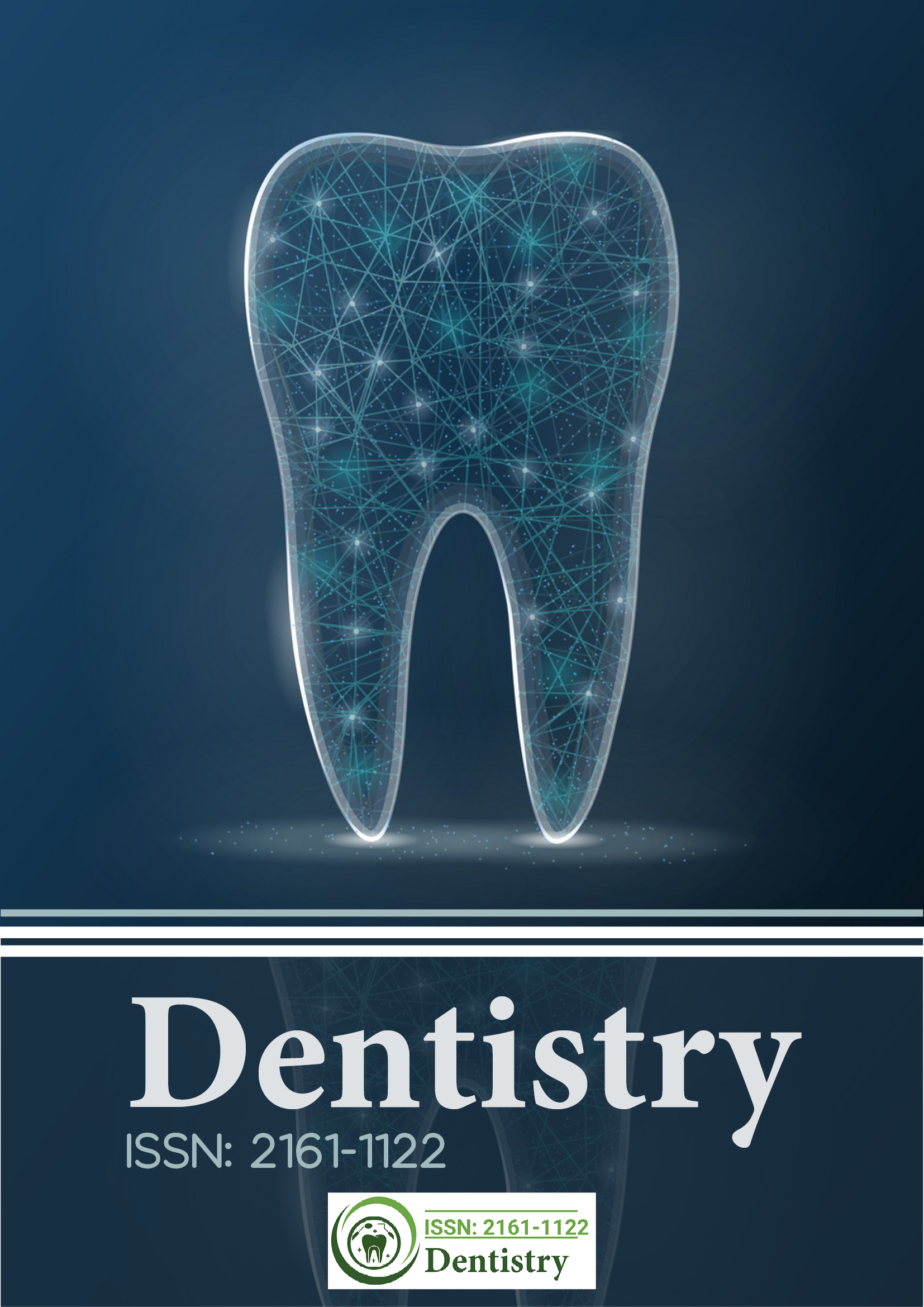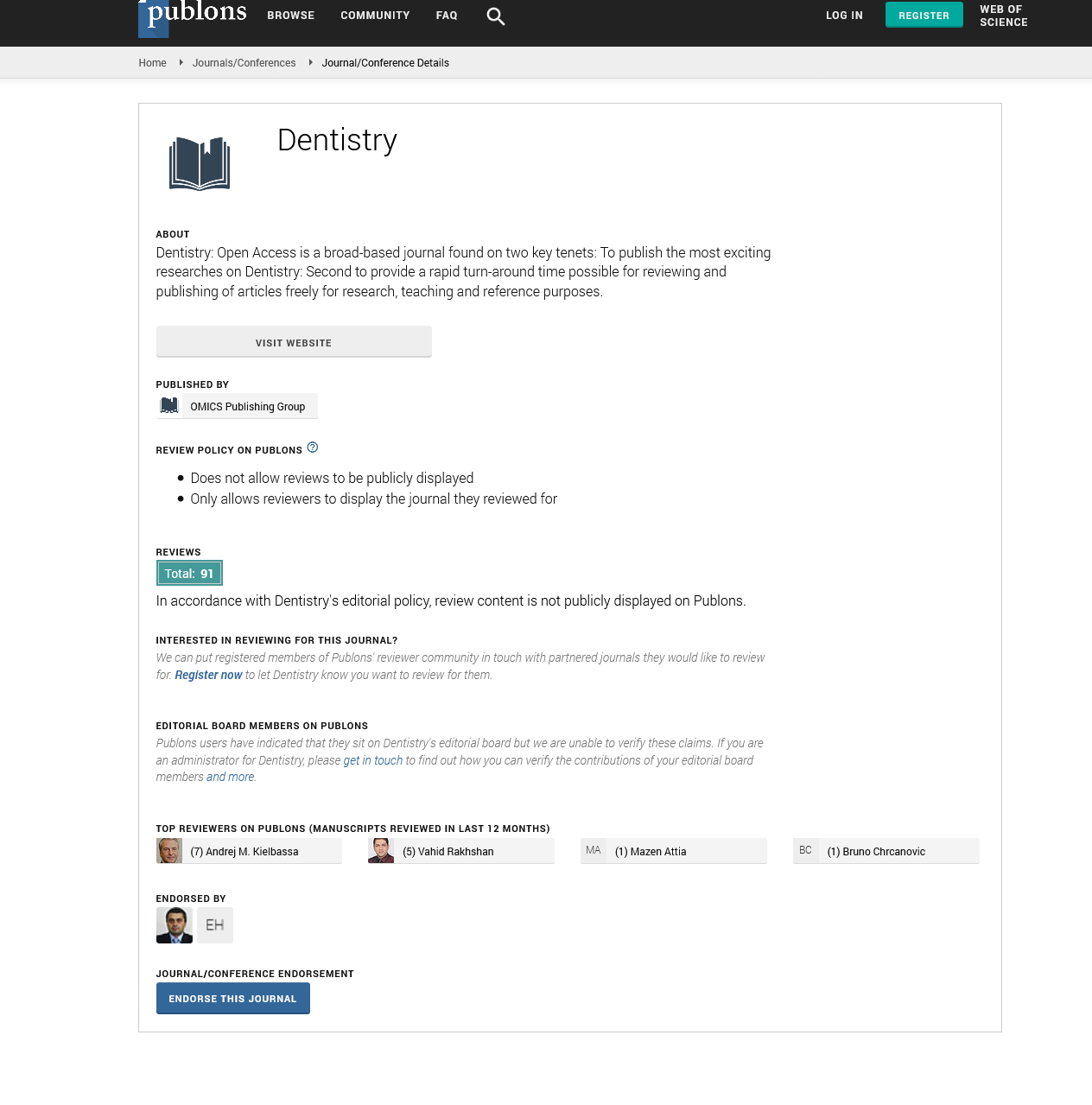Citations : 2345
Dentistry received 2345 citations as per Google Scholar report
Indexed In
- Genamics JournalSeek
- JournalTOCs
- CiteFactor
- Ulrich's Periodicals Directory
- RefSeek
- Hamdard University
- EBSCO A-Z
- Directory of Abstract Indexing for Journals
- OCLC- WorldCat
- Publons
- Geneva Foundation for Medical Education and Research
- Euro Pub
- Google Scholar
Useful Links
Share This Page
Journal Flyer

Open Access Journals
- Agri and Aquaculture
- Biochemistry
- Bioinformatics & Systems Biology
- Business & Management
- Chemistry
- Clinical Sciences
- Engineering
- Food & Nutrition
- General Science
- Genetics & Molecular Biology
- Immunology & Microbiology
- Medical Sciences
- Neuroscience & Psychology
- Nursing & Health Care
- Pharmaceutical Sciences
Photo-crosslinkable membrane for guided periodontal tissue regeneration
23rd International Conference on Dentistry and Dental Materials
July 19-20, 2018 | Rome, Italy
Pauline Marie Chichiricco, Raphael Riva, Jean Michel Thomassin, Xavier Struillou, Catherine Le Visage, Christine Jéoerome and Pierre Weiss
CERM - University of Liège, Belgium
University of Nantes, France
CHU Nantes, France
Scientific Tracks Abstracts: Dentistry
Abstract:
Periodontitis is an inflammatory disease resulting from the presence of oral bacteria biofilm in periodontal tissue, which
destroys the tooth-supporting attachment apparatus. Untreated inflammation can spread to all periodontal tissue and lead,
ultimately, to tooth loss. Guided tissue regeneration (GTR) is a technique based on a barrier membrane designed to prevent
colonization of the wound space by gingival cells. Indeed, these cells, with a faster migration and proliferation rate compared to
those of bone and periodontal ligament ones, could interfere with the regeneration process. We developed a photo-crosslinkable
formulation composed on methacrylated carboxymethyl Chitosan (MA-CMCS) and silanized hydroxypropylmethyl cellulose
(Si-HPMC), that can be applied in situ and cured with a visible light lamp (λ 420-480 nm), already used in dentistry. Photocuring,
in fact, appears the more appropriate technique for this application for its both shape and curing time control. We
assessed the chemical and physico-chemical profile of this material, showing a quick time to obtain a solid membrane. To
evaluate the degradation, the crosslinked material was soaked in highly concentrated lysozyme buffer at 37°C. Si-HMPC/
MA-CMCS material revealed a degradation profile between the two crosslinked biomaterials of reference. The in vitro
biocompatibility was demonstrated by Neutral red assay using murine fibroblast (L929). Moreover, we studied the barrier
effect of using primary cells, human gingival fibroblasts, observing the cells by confocal microscopy. No cells invasion was
observed in Si-HMPC/MA-CMCS material. In addition, we set up an ex vivo experiment culturing human gingival explants in
presence of our biomaterial and using pullulan porous material as a negative control. After culture, the samples were stained
with hematoxylin, eosin Y and safranin (HES). The histological sections revealed that the biomaterial exhibited the barrier
effect in contact with soft tissue. In the next future, in vivo experiment will be performed to further characterize the material
for periodontal regeneration.
Recent Publications:
1. M C Bottino et al. (2012) Recent advances in the development of gtr/gbr membranes for periodontal regeneration: a
materials perspective. Dent. Mater. 28(7):703-721. Doi:10.1016/j.dental.2012.04.022.
2. L Larsson et al. (2016) Regenerative Medicine for Periodontal and Peri-implant Diseases. J. Dent. Res. 95(3):255-266.
Doi:10.1177/0022034515618887.
3. L Shue et al. (2016) Biomaterials for periodontal regeneration a review of ceramics and polymers. 2(4):271-277.
Doi:10.4161/biom.22948.
4. A Viguier et al. (2016) Interpenetrated Si-HPMC/alginate hydrogels as a potential scaffold for human tissueregeneration. J. Mater. Sci. Mater. Med. 27(5):99. Doi:10.1007/s10856-016-5709-2.
5. A Fatimi et al. (2009) Gelation studies of a cellulose-based biohydrogel: the influence of pH, temperature and
sterilization. Acta Biomater. 5(9):3423-3432. Doi:10.1016/j.actbio.2009.05.030.
Biography :
Pauline Marie Chichiricco obtained the Degree of Doctor in Pharmacy at Sapienza University in Rome, Italy. She is in her ultimate year PhD in a European program (Nanofar) between the Regenerative Medicine and Skeleton laboratory in Nantes, under the supervision of Professor Pierre Weiss and Doctor Xavier Struillou, and the Center for Education and Research on Macromolecules (CERM) at Liège University under the supervision of Professor Christine Jerome. Her research interest lies in biomaterials.

